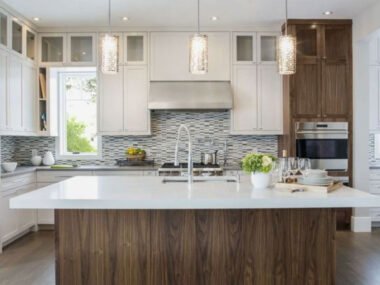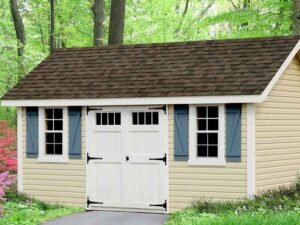Want to build something that won’t fall apart in two years?
Every construction project depends on one critical decision: choosing the right lumber. Whether it’s a deck, house frame, or weekend DIY project, the wood type makes or breaks everything.
Here’s the problem:
Most people walk into hardware stores completely clueless about lumber types. They grab whatever looks decent, start building, and wonder why their deck is rotting after one season or their framing lumber warps like crazy.
Sound familiar?
This happens to thousands of builders every year. The wrong lumber choice turns simple projects into expensive disasters.
And here’s the kicker…
With lumber prices going absolutely wild, making the wrong choice costs more than ever.
What you’ll discover:
- Why Lumber Selection Actually Matters
- The 5 Construction Lumber Types Worth Knowing
- How to Match Wood to Your Specific Project
- Smart Strategies for Buying Quality Lumber
Why Lumber Selection Actually Matters
- Think all lumber is basically the same?
- The average new single-family home uses more than 15,000 board feet of framing lumber. That’s a massive amount of wood! Choose the wrong type and expensive repairs are guaranteed.
- Here’s what most people don’t realize…
- Construction lumber isn’t just about strength. There are four critical factors that determine success or failure:
- Moisture resistance– Some woods rot in months, others last decades
- Insect resistance– Termites demolish certain species quickly
- Workability– How easily it cuts, nails, and shapes
Cost – Premium lumber destroys budgets fast
The lumber market has been absolutely insane lately. Lumber and building material stores generated $145.4 billion in revenue in 2024, showing just how massive this industry really is.
And here’s the kicker…
With lumber prices expected to stabilize in the $500-$600 per thousand board feet range, getting it right the first time is more important than ever.
When shopping at your local hardware store, dozens of different lumber options create total confusion. But most fall into just a few main categories.
Pretty cool, right?
With lumber prices rising 38% compared to last year, knowing which wood to choose has never been more critical.
The 5 Construction Lumber Types Worth Knowing
Pressure-Treated Pine
- This is the outdoor construction workhorse.
- Pressure-treated pine gets chemically treated to resist rot, insects, and moisture. Perfect for:
- Deck framing
- Fence posts
- Foundation sills
Outdoor structures
The downside? It’s ugly and needs drying time before staining or painting.
But don’t let that stop you. Pressure-treated pine delivers unmatched durability for outdoor projects at a fraction of cedar’s cost.
Douglas Fir
- Douglas fir dominates structural framing for good reason.
- This wood delivers incredible strength and stays straight. Ideal for:
- Wall framing
- Floor joists
- Roof rafters
Engineered lumber products
Construction crews swear by Douglas fir because it’s consistent and holds nails perfectly.
Southern Yellow Pine
- Southern Yellow Pine grows fast and costs less.
- Common uses include:
- Interior framing
- Subflooring
- Sheathing
General construction
Pro tip: Southern Yellow Pine often gets pressure-treated for outdoor use. Best of both worlds.
Cedar
- Cedar is the premium outdoor lumber choice.
- Natural oils make cedar resistant to rot and insects without chemical treatment. Perfect for:
- Decking
- Siding
- Outdoor furniture
Fencing
The trade-off? Cedar costs significantly more than other options.
Redwood
- Redwood is another premium outdoor lumber option.
- Like cedar, redwood naturally resists rot and insects. Common applications:
- High-end decking
- Outdoor structures
- Siding
Landscaping features
Here’s the thing about redwood…
It’s gorgeous but expensive. Smart builders use it for visible areas and cheaper lumber for structural elements.
How to Match Wood to Your Specific Project
Picking the right lumber depends on specific project needs.
Here’s the breakdown:
For Structural Framing
- Strength and consistency matter most. Go with:
- Douglas Fir (premium choice)
- Southern Yellow Pine (budget-friendly)
- Hem-Fir (good middle ground)
For Outdoor Projects
- Moisture resistance is everything. Choose:
- Pressure-treated pine (most common)
- Cedar (premium natural option)
- Redwood (top-tier choice)
For Interior Projects
- Appearance matters more than weather resistance:
- Pine (easy to work with)
- Poplar (takes paint beautifully)
- Oak (hardwood upgrade)
For Subflooring
- Stability and strength are required:
- OSB (oriented strand board)
- Plywood
- Tongue-and-groove subflooring
Smart Strategies for Buying Quality Lumber
Shopping for lumber overwhelms most people.
Here’s what to look for:
Check the Grade Stamps
- Every piece of construction lumber has a grade stamp. Look for:
- Select Structural– highest grade
- 1 & Better– good quality
- 2– standard construction grade
- Utility– lowest grade
Inspect Each Board
- Don’t just grab lumber off the pile. Check for:
- Warping or bowing
- Large knots or defects
- Proper moisture content
- Straight grain patterns
Buy from Reputable Dealers
Two-thirds of US lumber consumption is attributed to new home construction and home improvement projects, so quality matters. Stick with established suppliers who understand construction needs.
Consider Engineered Options
- Modern engineered lumber products offer:
- Consistent quality
- Longer spans
- Better performance
Reduced waste
Examples include LVL (laminated veneer lumber), I-joists, and glue-laminated beams.
Understanding Lumber Pricing
- Lumber prices have been on a wild ride lately.
- What affects lumber costs:
- Housing market demand
- International trade policies
- Weather and natural disasters
- Transportation costs
Seasonal Price Patterns
- Lumber prices typically:
- Rise in spring (building season starts)
- Peak in summer (construction high season)
- Fall in autumn (demand decreases)
- Bottom out in winter (minimal construction)
Budget Planning Tips
- Buy lumber just before needing it
- Consider buying in bulk for large projects
- Watch for seasonal sales
- Compare prices between suppliers
Common Lumber Buying Mistakes
Most people make these errors:
Buying the Wrong Grade
Using utility grade lumber for structural applications is dangerous. Always match the grade to project requirements.
Ignoring Moisture Content
- Wet lumber shrinks as it dries, causing:
- Nail pops
- Gaps between boards
- Warping and twisting
Choosing Appearance Over Function
Don’t use interior-grade lumber for outdoor projects just because it looks better. It won’t last.
Forgetting About Fasteners
- Different lumber types require different fasteners:
- Pressure-treated lumber needs galvanized or stainless steel
- Hardwoods need pre-drilling
- Softwoods work with standard nails
Making Smart Lumber Choices
- The key to successful construction is matching the right lumber to specific needs.
- Quick decision guide:
- Structural framing:Douglas Fir or Southern Yellow Pine
- Outdoor decking:Pressure-treated pine or cedar
- Interior trim:Pine or poplar
- Subflooring:OSB or plywood
- Fence posts:Pressure-treated pine
- Siding:Cedar or engineered options
Bottom Line
Understanding lumber types isn’t rocket science, but it makes a huge difference in project success.
The right lumber choice depends on specific application, budget, and local climate. When in doubt, ask the experts at hardware stores – they’ve seen every type of project and can point in the right direction.
Remember, quality lumber is an investment. Skimping on materials might save money upfront, but it usually costs more in the long run through repairs and replacements.
Take the time to choose wisely, and construction projects will last for years to come.










